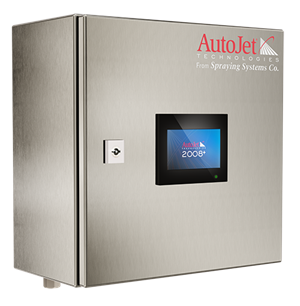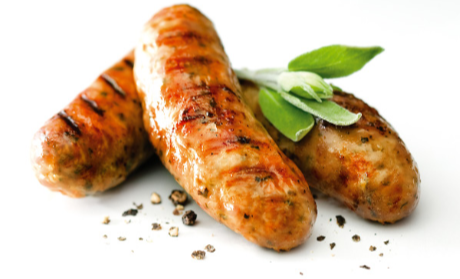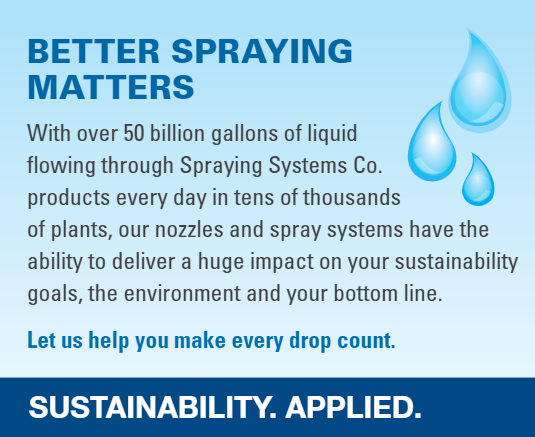A leading manufacturer of casings for the meat industry uses a special oil for sausage casing lubrication. This lubrication process is performed in a machine that folds the expanded casing into a compact tube that’s suitable for transportation and further use. The folding process moves the material at a very high, and variable, speed. During this process the casing is lubricated evenly with a very precise amount of oil in a closed-off chamber in the machine.
To apply the oil the manufacturer was using difficult to control air atomizing nozzles. These caused many small oil droplets to fly out of the lubrication chamber. This wastage, overspray and misting lead to major maintenance headaches. On top of that the lack of control caused uneven coverage and, ultimately, bad product quality.
The primary goal for the casings manufacturer was finding a sausage casing lubrication system that could solve their problems and still apply enough lubricant without causing striping.
AutoJet sausage casing lubrication system

To solve the issues our local spray expert proposed to install 4 PulsaJet® nozzles evenly around the machine’s lubrication chamber. Each nozzle is aimed to the center of the chamber and precisely applies the oil on the casing. Accurate control of the nozzles is ensured by the AutoJet® 2008+ Controller that is capable of Precision Spray Control.
In order to test the sausage casing lubrication system, the Spraying Systems engineers ran repeated production trials using calculated values first. In a second step they calibrated the system by using feedback from the plant laboratory. This feedback was gathered by measuring the distribution and sprayed amount on predefined sets of the casing after each test run.
Result
The customer was impressed with the results and ordered 9 systems to be fitted to all of their machines. All of the wastage, overspray and misting issues were fixed while the casings were lubricated with greater accuracy. This process optimalisation has resulted in a higher end product quality.
The newly installed AutoJet® System paid for itself in less than 3 months because of the profound effect it had on the production costs. By spraying accurately and economically the oil consumption was brought down with more than 80 tons per year. On top of that the machines no longer need to be equipped with exhaust systems. This results in a further saving of 18kW. It also helps to bring down the customer’s carbon footprint – an important sustainability goal of the management.



